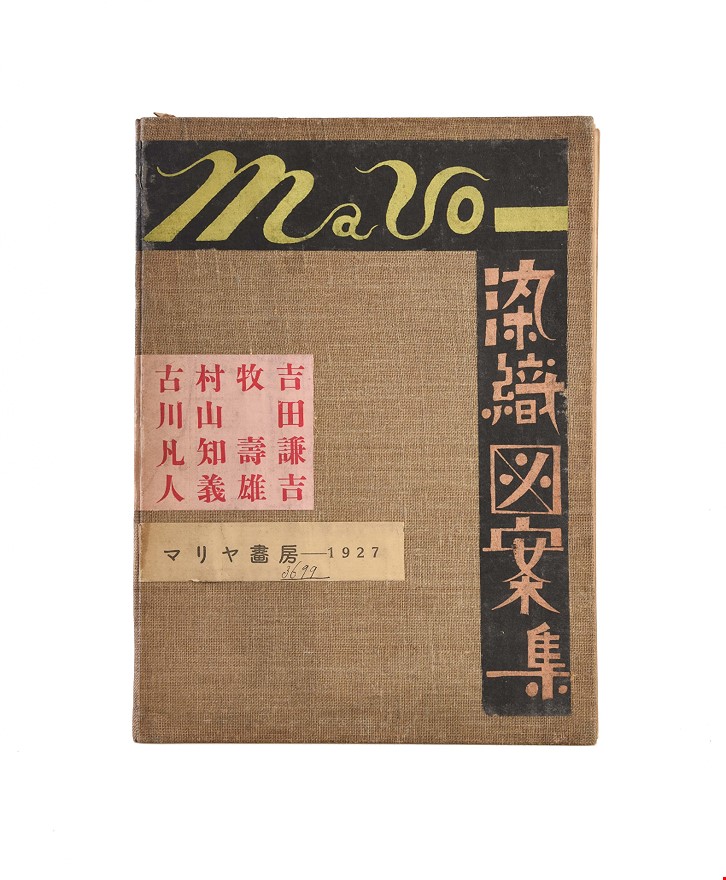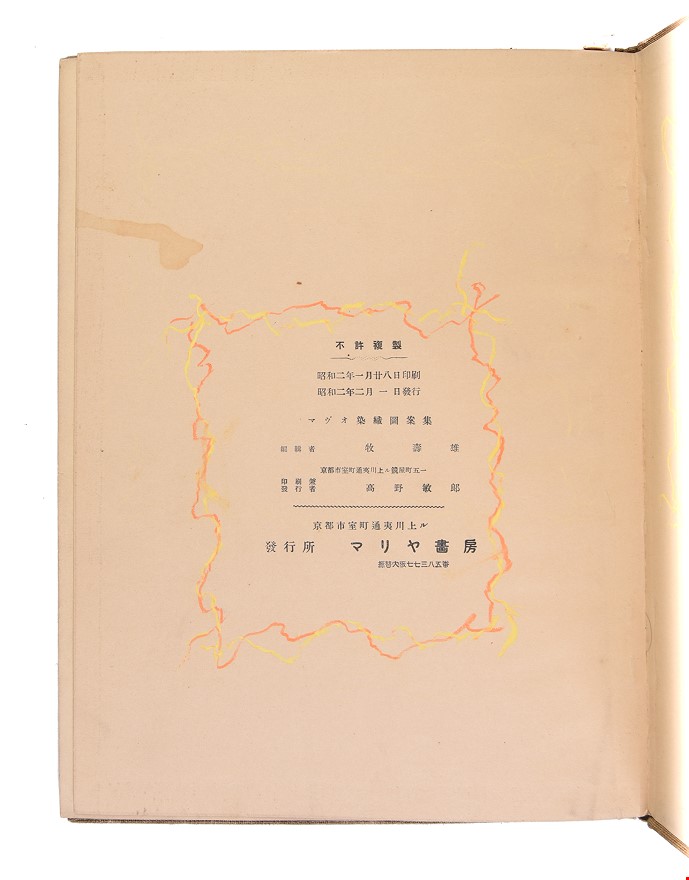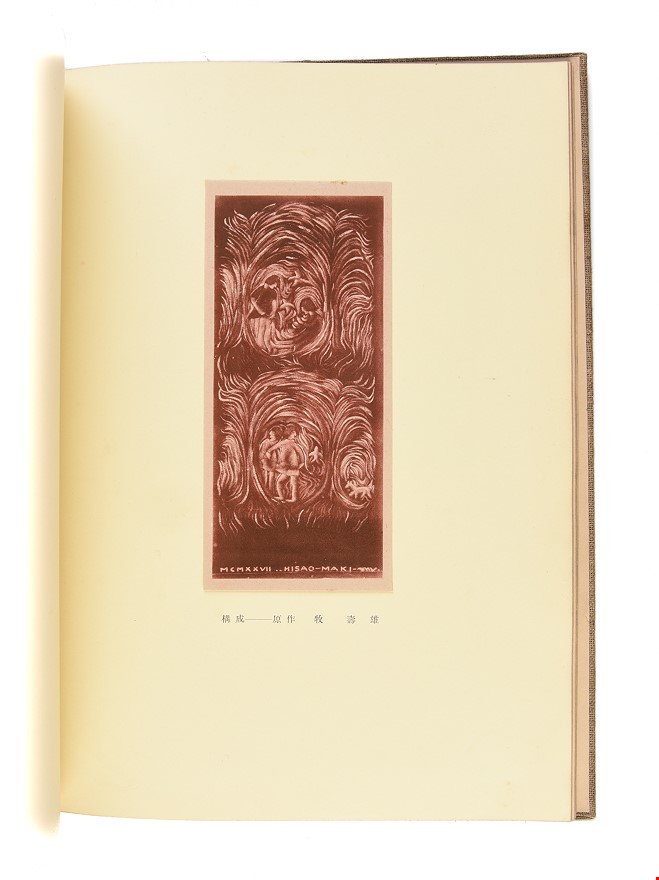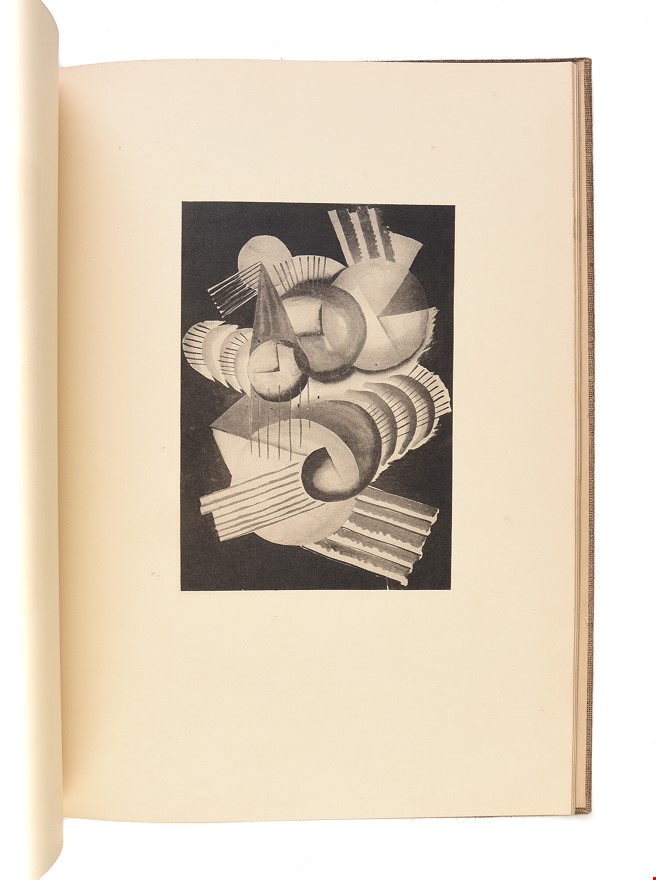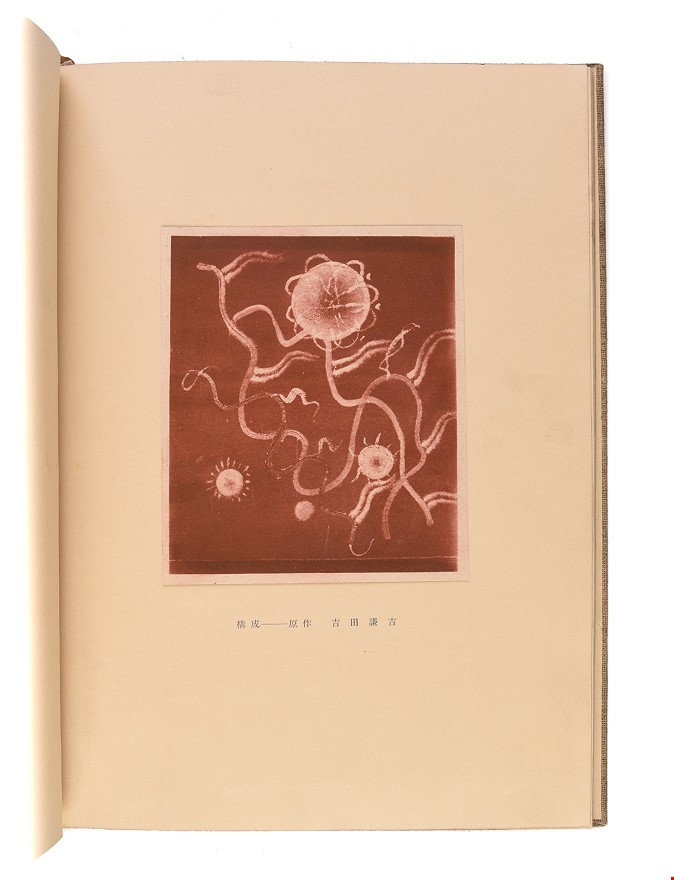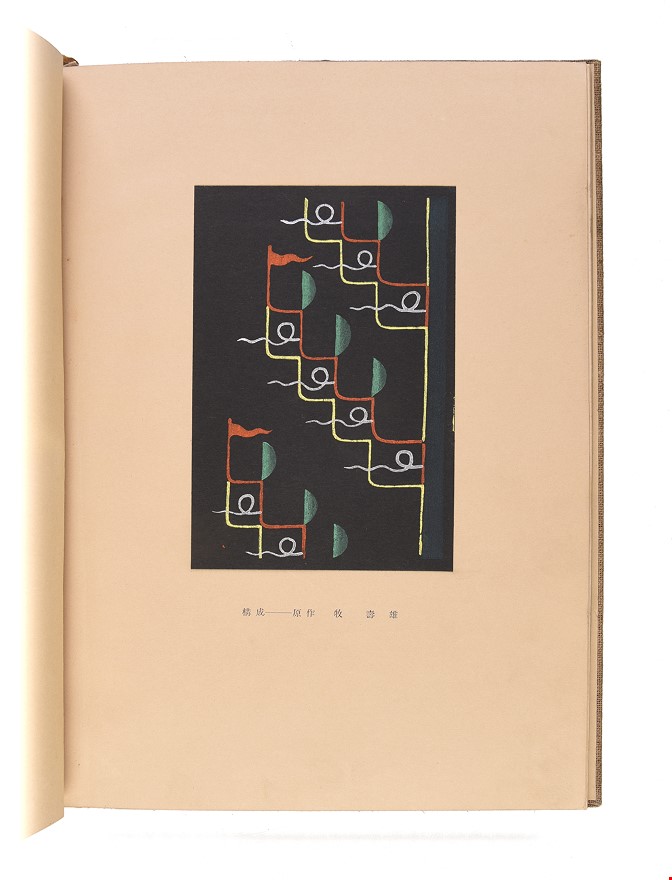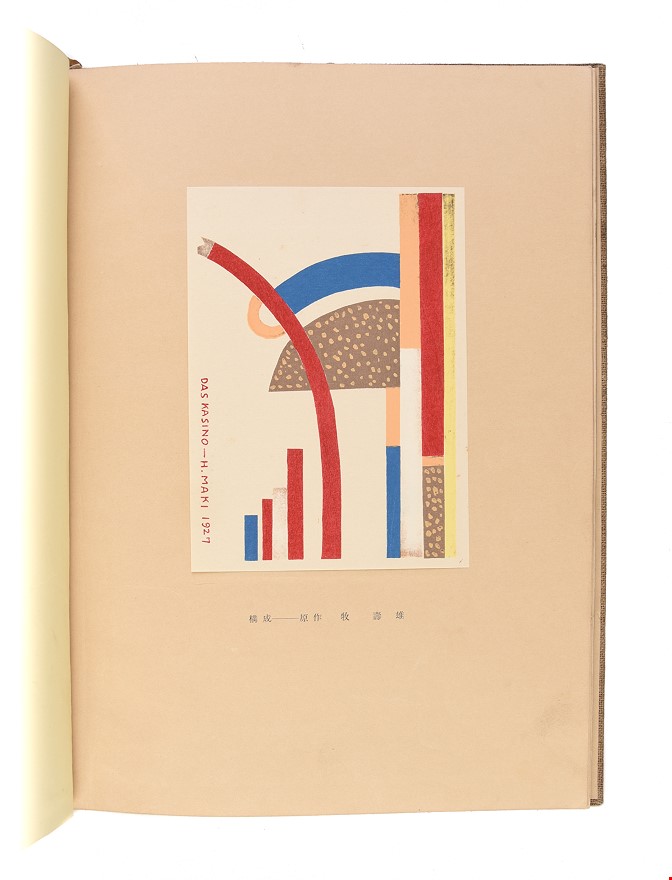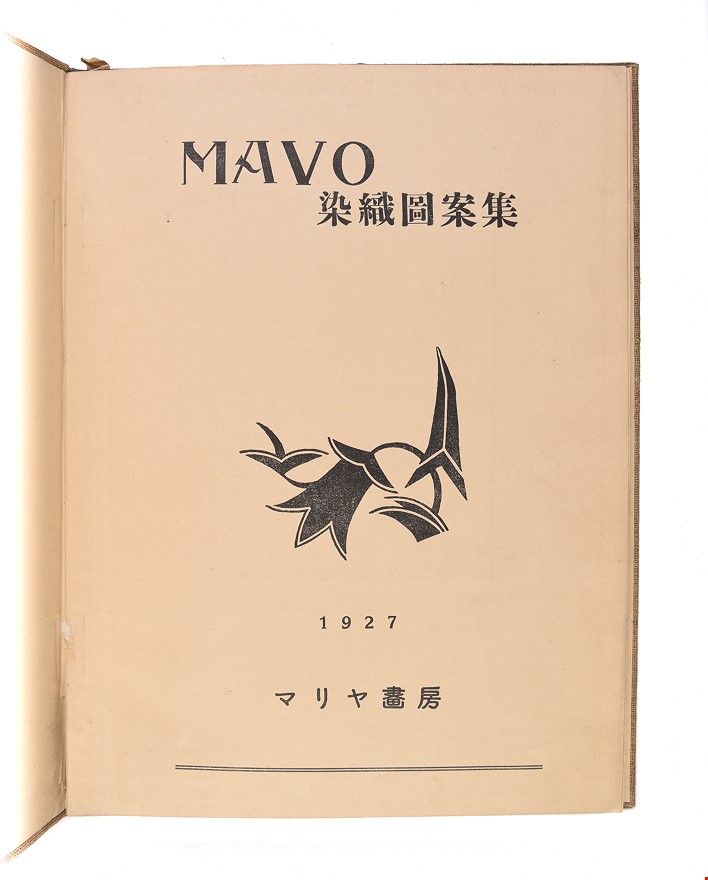MAVO Senshoku zuan shu. [MAVO Collection of Designs for Dyeing and Weaving].
MURAYAMA Tomoyoshi.; YOSHIDA Kenkichi.; MAKI Hisao.; FURUKAWA Bonjin (1927.)
£28000.00 [First Edition]
Please contact us in advance if you would like to view this book at our Curzon Street shop.
JAPANESE AVANT-GARDE
First edition. Two original tipped-in colour stencil prints by Maki Toshio, one tipped-in collotype plate of a work by Yoshida Kenkichi, one further tipped-in collotype plate of a work by Maki Toshio, and 37 monochrome plates. Folio (measuring 23x31cm). Original cloth with stencil printed colour title, pink lithograph list of contributors & imprint label (slightly defective on verso). Overall a very good copy. [iii](title, preface&imprint)ff. Kyoto, Mariya Gabo,
The MAVO group was founded in June 1923 by Murayama Tomoyoshi (1901-1977) who had just returned from a one year stint in Berlin where he had encountered the Dadaist movement. Inspired by their radical anti-establishment attitudes, MAVO constituted the main Japanese avant-garde art movement of the 1920s, combining modern forces from poetry, painting, architecture, sculpture, theater and illustration. Between July 1924 and August 1925 they published a series of seven magazines under their own name which included abstract linocut prints and photographic reproductions. In October 1926 Murayama Tomoyoshi teamed up with Maki Toshio and Yoshida Kenkichi, both newcomers in the dyeing and weaving world in Kyoto, for the purpose of "scientific research on Japanese textiles, research on dyeing and weaving patterns, and research on clothing composition, etc." They then formed the "Federation of Textile Art Research" (Shokusen geijutsu kenkyu renmei) and brought the emerging themes of modern art to the traditional field of dyeing and weaving. An exhibition called "Composition of Dyeing and Weaving" (Koseiha senshoku ten) was held at the Osaka Mitsukoshi department store in November 1926, featuring obis and kimonos with abstract patterns and designs.
In the following year, Murayama published the present "MAVO Collection of Designs for Dyeing and Weaving" which summarizes his revolutionary new approach. Maki's preface entitled "A Constructivist View of Clothing" (Kosei-shugi no fukushoku-kan), states three aims: 1. "Rehabilitation of a healthy attitude towards sexuality and rejecting concepts that arouse the interest of the opposite sex through clothing" [By this they meant the formation of a new unisex style of clothing]. 2. With the complete removal of the boundary between labour and rest, lifestyles will be streamlined and a gentrification of clothing will occur. 3. Clothes should an aid to display the dynamic beauty of the inner body. And he proclaims his view that modern women's clothing requires a "concise and clear form" and should "focus on a tactile sensation". This book is clearly a continuation of the spirit of the original Mavo magazine. The beautifully composed binding has a handmade feel and represents a collage work of art on its own.
Exceedingly rare. Only one copy in Japan (National Art Center, Tokyo).
Stock Code: 243948
